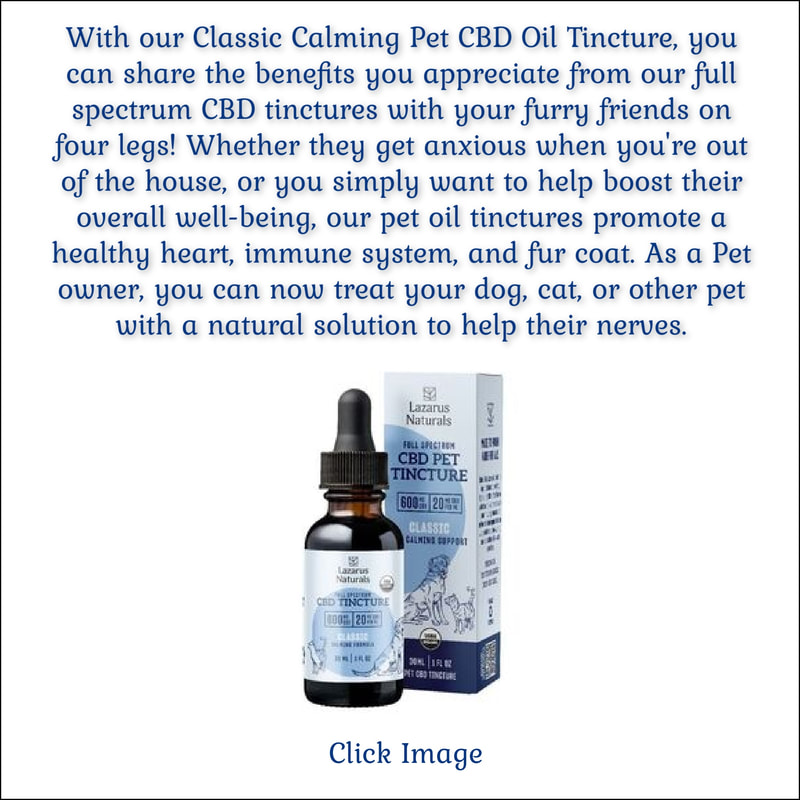
By Univ of Tennessee
Hyperbaric oxygen therapy is produced by allowing a patient to breathe very high concentrations of oxygen while placing them in a chamber and increasing the pressure around them. By increasing the pressure around a patient while they breathe oxygen, we can increase the amount of oxygen in the blood by as much as 15 times normal levels. The increased pressure condenses the oxygen molecules making more molecules available for the blood to pick up in the lung.
The goal is to increase the amount of oxygen delivered to the diseased tissue to help it to heal. Hyperbaric oxygen therapy may be used alone or in conjunction with conventional therapies. The patient is placed in a chamber of suitable size and the pressure surrounding the patient is increased by allowing oxygen to flow into the chamber.
Oxygen should be considered a drug and just as any other drug we might administer, it has various doses, frequencies of administration and duration of therapy. These depend on what disease is being treated. For example, a protocol might call for a patient to receive 2 atmospheres of pressure (like diving to 33 ft. in the ocean) for 1 hr. every other day for 7-10 treatments.
Hyperbaric oxygen therapy is produced by allowing a patient to breathe very high concentrations of oxygen while placing them in a chamber and increasing the pressure around them. By increasing the pressure around a patient while they breathe oxygen, we can increase the amount of oxygen in the blood by as much as 15 times normal levels. The increased pressure condenses the oxygen molecules making more molecules available for the blood to pick up in the lung.
The goal is to increase the amount of oxygen delivered to the diseased tissue to help it to heal. Hyperbaric oxygen therapy may be used alone or in conjunction with conventional therapies. The patient is placed in a chamber of suitable size and the pressure surrounding the patient is increased by allowing oxygen to flow into the chamber.
Oxygen should be considered a drug and just as any other drug we might administer, it has various doses, frequencies of administration and duration of therapy. These depend on what disease is being treated. For example, a protocol might call for a patient to receive 2 atmospheres of pressure (like diving to 33 ft. in the ocean) for 1 hr. every other day for 7-10 treatments.
|
Different diseases or problems require different doses, frequencies of treatment, and duration of treatment just like the use any conventional drugs.
There are many indications for this therapy. In most diseases, blood flow to the diseased tissue is compromised which in turn decreases the amount of oxygen available for tissue healing. Hyperbaric therapy is able to increase tissue oxygen levels in diseased tissue which improves and speeds healing, improves the body's ability to fight infections, and reduces inflammation and swelling. Hyperbaric oxygen therapy is both a primary treatment and a complementary therapy. Consequently, hyperbaric oxygen therapy may be used alone or in conjunction with conventional therapies. |
There are many indications for this therapy. In general, any condition or disease in which the circulation to the diseased tissue has been compromised will benefit from this therapy. Hyperbaric therapy is a primary treatment for some diseases including severe smoke inhalation and burns, Clostridial and other anaerobic infections, and compromised wounds. Hyperbaric therapy is potentially beneficial in other diseases:
Athletic injuries:
Desmitis (ligament disease)
Tendonitis (bowed or diseased tendons)
Fractures
Exercised induced pulmonary hemorrhage (Bleeders)
Other diseases for which hyperbaric therapy is indicated include:
Acute laminitis (Founder)
Reperfusion diseases (severe muscle damage, crush injuries)
Colic (intestinal obstruction, colon torsions, volvulus, etc.)
Enteritis and endotoxemia
Ileus (loss of intestinal motility)
Infertility (male and female)
Rhodococcus pneumonia in foals
Lyme's disease
Osteomyelitis (bone infection)
Compromised wounds
Sinus infections
Sudden blood loss
Myositis (tying up)
Septic arthritis (joint infections)
Neurologic disease and trauma
Severe necrosis (as in snake and spider bites, toxic substances, etc.)
Neonatal maladjustment syndrome
There are many other diseases in which hyperbaric therapy can be beneficial.
Desmitis (ligament disease)
Tendonitis (bowed or diseased tendons)
Fractures
Exercised induced pulmonary hemorrhage (Bleeders)
Other diseases for which hyperbaric therapy is indicated include:
Acute laminitis (Founder)
Reperfusion diseases (severe muscle damage, crush injuries)
Colic (intestinal obstruction, colon torsions, volvulus, etc.)
Enteritis and endotoxemia
Ileus (loss of intestinal motility)
Infertility (male and female)
Rhodococcus pneumonia in foals
Lyme's disease
Osteomyelitis (bone infection)
Compromised wounds
Sinus infections
Sudden blood loss
Myositis (tying up)
Septic arthritis (joint infections)
Neurologic disease and trauma
Severe necrosis (as in snake and spider bites, toxic substances, etc.)
Neonatal maladjustment syndrome
There are many other diseases in which hyperbaric therapy can be beneficial.
The risks associated with hyperbaric therapy are minimal if it is properly applied. As with any drug therapy, there are occasions where unanticipated reactions occur, but these are rare. Thousands of people and animals have been successfully treated with this therapy. The side effects in animals are very infrequent. Side effects studied in humans are usually transient and disappear when the therapy is discontinued.
The Department of Large Animal Clinical Sciences in the University of Tennessee, College of Veterinary Medicine provides hyperbaric therapy for large and small animals. Therapy is provided in a vertical hyperbaric chamber slightly smaller than an equine stall. The state-of-the-art chamber provides a comfortable environment for horses as in most cases they are not tied or sedated and are free to move around the stall at their leisure. Patients are monitored continuously from outside the chamber through ports in the chamber wall and through the use of closed circuit video by well trained technicians and doctors.
The hyperbaric center at the College of Veterinary Medicine treats both patients of UTCVM clients and patients referred for hyperbaric therapy by private practitioners and other referral centers. Patients may be treated on both an outpatient and inpatient basis. For animals admitted for various diseases, the doctor who is attending to your animal will be able to discuss the possibility of the benefit of hyperbaric oxygen therapy in relation to your animal's problem.
The Department of Large Animal Clinical Sciences in the University of Tennessee, College of Veterinary Medicine provides hyperbaric therapy for large and small animals. Therapy is provided in a vertical hyperbaric chamber slightly smaller than an equine stall. The state-of-the-art chamber provides a comfortable environment for horses as in most cases they are not tied or sedated and are free to move around the stall at their leisure. Patients are monitored continuously from outside the chamber through ports in the chamber wall and through the use of closed circuit video by well trained technicians and doctors.
The hyperbaric center at the College of Veterinary Medicine treats both patients of UTCVM clients and patients referred for hyperbaric therapy by private practitioners and other referral centers. Patients may be treated on both an outpatient and inpatient basis. For animals admitted for various diseases, the doctor who is attending to your animal will be able to discuss the possibility of the benefit of hyperbaric oxygen therapy in relation to your animal's problem.
If you have questions about hyperbaric oxygen therapy or the application of this therapy to a particular patient, the veterinarians at the University of Tennessee, College of Veterinary Medicine are good resources for consultation on the use of hyperbaric therapy. Specific contact information is available below.
We continue to develop studies looking at all of the potential uses for this therapy in animals.
We continue to develop studies looking at all of the potential uses for this therapy in animals.
Currently we are looking at beneficial ways to use hyperbaric therapy in improving the viability of skin grafts in the horse, its effects on endotoxemia and laminitis, and how it might be used in conjunction with conventional therapy in the treatment of tendonitis and desmitis in the equine athlete.
We have developed a protocol for the combination of hyperbaric therapy with stem cell injections and rehabilitation procedures to produce stronger and faster healing.
We have developed a protocol for the combination of hyperbaric therapy with stem cell injections and rehabilitation procedures to produce stronger and faster healing.
As we advance the hyperbaric center and the discipline of veterinary hyperbaric medicine in the UT College of Veterinary Medicine we are continually seeking the support of funding agencies, foundations, and private patrons and benefactors in developing the hyperbaric service infrastructure (facility, equipment, personnel) and increasing our hyperbaric research initiatives. Interested groups or individuals may us the contact information below to inquire about development opportunities.
Contact Information:
Dr. Henry Steve Adair DVM, Dip ACVS
The University of Tennessee Institute of Agriculture
College of Veterinary medicine
Department of Large Animal Clinical Sciences
2407 River Dr.
Knoxville, Tennessee 37996
Tel: 865-974-8387
865-974-5703
865-974-5701
FAX: 865-974-5773
Email: [email protected]
Dr. Dennis R. Geiser DVM, Dip ABVP - Equine
The University of Tennessee Institute of Agriculture
College of Veterinary medicine
Department of Large Animal Clinical Sciences
2407 River Dr.
Knoxville, Tennessee 37996
Tel: 865-974-5703
865-974-5701
Cell: 865-755-8266
FAX: 865-974-5773
Contact Information:
Dr. Henry Steve Adair DVM, Dip ACVS
The University of Tennessee Institute of Agriculture
College of Veterinary medicine
Department of Large Animal Clinical Sciences
2407 River Dr.
Knoxville, Tennessee 37996
Tel: 865-974-8387
865-974-5703
865-974-5701
FAX: 865-974-5773
Email: [email protected]
Dr. Dennis R. Geiser DVM, Dip ABVP - Equine
The University of Tennessee Institute of Agriculture
College of Veterinary medicine
Department of Large Animal Clinical Sciences
2407 River Dr.
Knoxville, Tennessee 37996
Tel: 865-974-5703
865-974-5701
Cell: 865-755-8266
FAX: 865-974-5773
Other articles on: Hyperbaric Chamber Therapy:
http://healthypets.mercola.com/sites/healthypets/archive/2013/04/26/hyperbaric-oxygen-therapy.aspx
http://peacelovepets.org/articles/hyperbaric-oxygen-therapy
http://mosao2.org/veterinary.html
http://www.centralfloridaanimaler.com/hyperbaric-oxygen-therapy/
http://animalemergency.net/hbot.php
http://dawgbusiness.blogspot.com/2013/06/hyperbaric-oxygen-therapy-heals-diamond.html
http://holisticvetcare.com/blog/holistic-veterinary-care-in-oakland-ca-announces-hyperbaric-oxygen-therapy-to-improve-pets-quality-of-life-and-healing/
http://healthypets.mercola.com/sites/healthypets/archive/2013/04/26/hyperbaric-oxygen-therapy.aspx
http://peacelovepets.org/articles/hyperbaric-oxygen-therapy
http://mosao2.org/veterinary.html
http://www.centralfloridaanimaler.com/hyperbaric-oxygen-therapy/
http://animalemergency.net/hbot.php
http://dawgbusiness.blogspot.com/2013/06/hyperbaric-oxygen-therapy-heals-diamond.html
http://holisticvetcare.com/blog/holistic-veterinary-care-in-oakland-ca-announces-hyperbaric-oxygen-therapy-to-improve-pets-quality-of-life-and-healing/



















